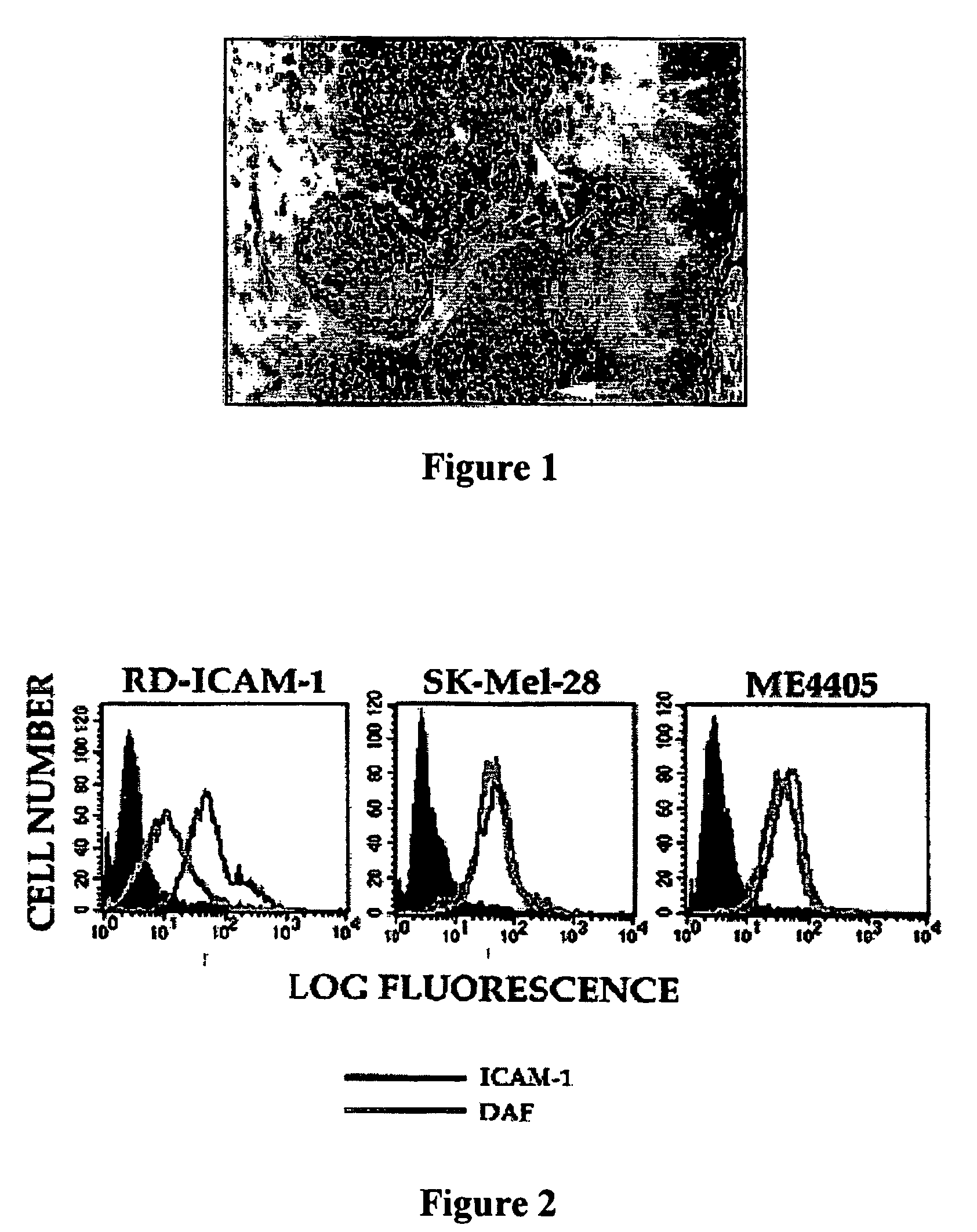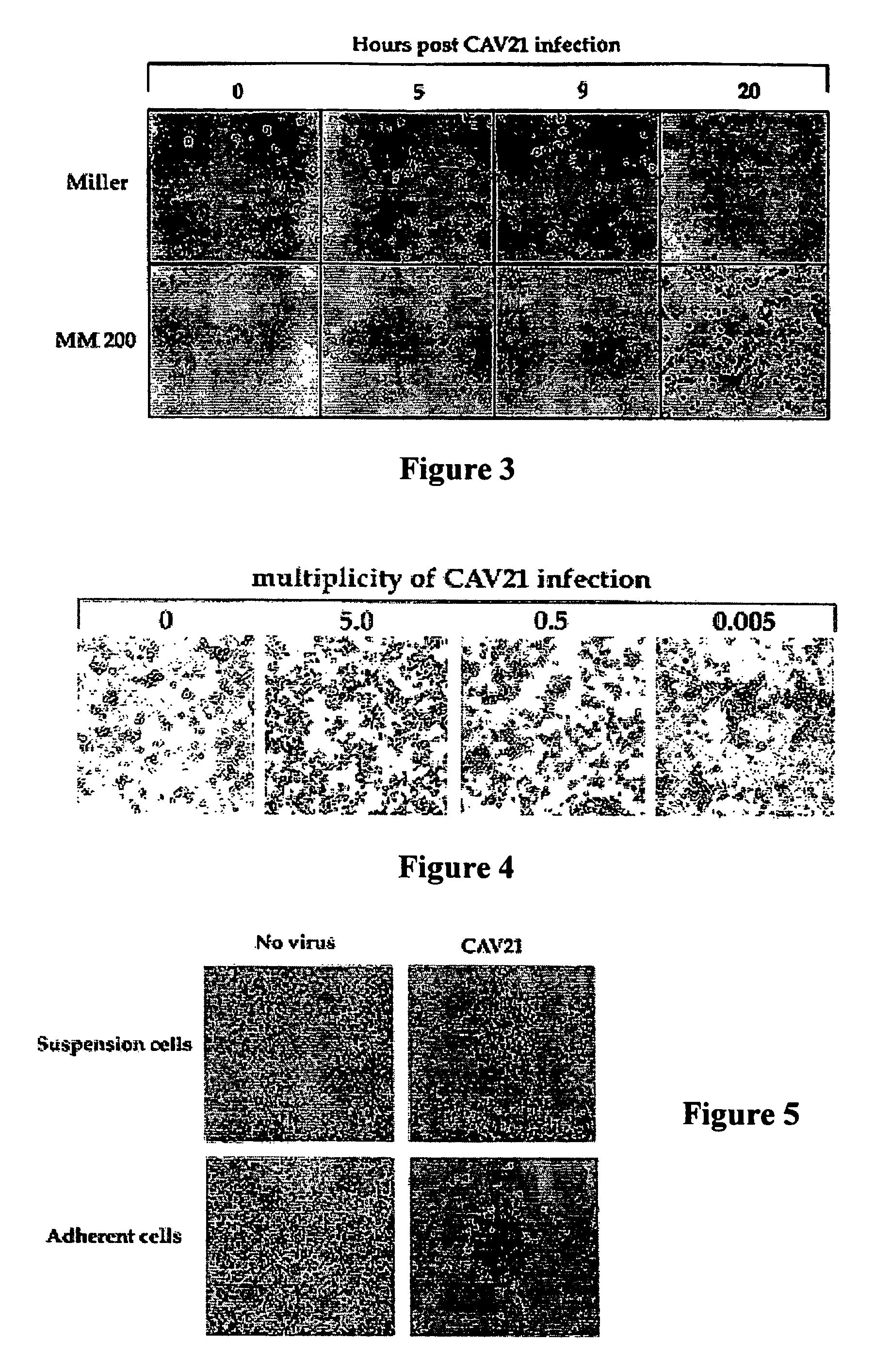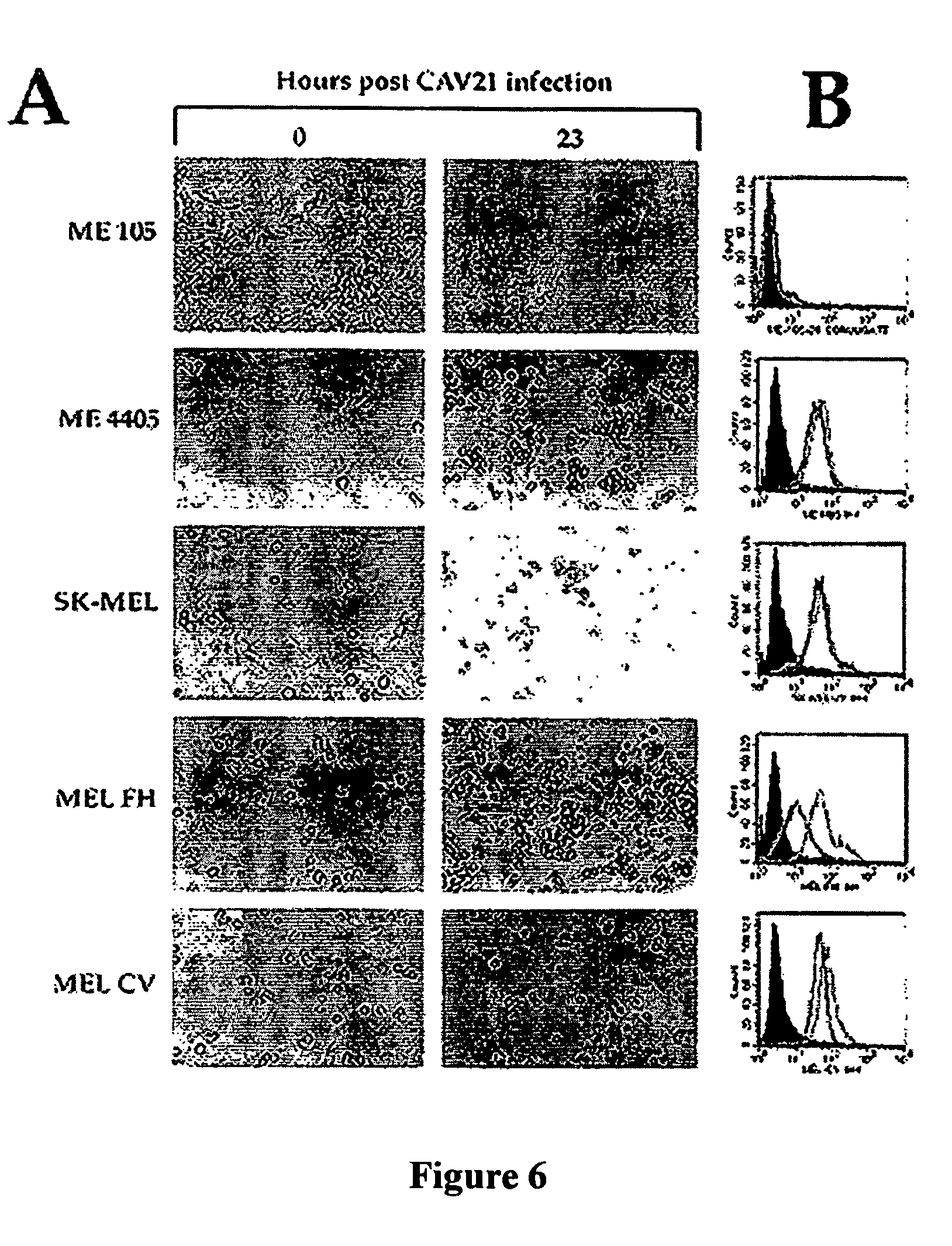Methods for treating malignancies expressing ICAM-1 using coxsackie a group viruses
a technology of coxsackie a group and malignancies, which is applied in the direction of viruses, drug compositions, biological testing, etc., can solve the problems of less successful control of more advanced forms, fewer deaths per year in that country alone, and increased risk of infection, so as to improve the ability of the virus to in
- Summary
- Abstract
- Description
- Claims
- Application Information
AI Technical Summary
Benefits of technology
Problems solved by technology
Method used
Image
Examples
example 1
1.1. Cell Lines
[0112]Continuous cultures of Rhabdomyosarcoma expressing ICAM-1 cells (RD-ICAM-1), HeLa-B cells, and human lung fibroblast cells (MRC5) were maintained in Dulbecco's Modified Eagle's Medium (DMEM) and 10% fetal calf serum (FCS). Two melanoma cell lines Sk-Mel-28 and ME4405 were obtained from Dr. Ralph (Department of Biochemistry and Molecular Biology, Monash University, Victoria, Australia) and Dr. Peter Hersey, Cancer Research Department, David Maddison Building Level 4, Royal Newcastle Hospital, Newcastle, New South Wales, Australia, respectively. The cell line Sk-Mel-28 is a metastatic melanoma cell line found to be resistant to chemotherapeutic drugs (56). The melanoma cell culture ME4405 was established from specimens of primary melanoma lesions (69). The two melanoma cell lines were maintained in DMEM containing 10% FCS. Rhabdomyosarcoma cells (RD) a heteroploid human embryonal cell line, and HeLa-B cells an aneuploid cell clone derived from human squamous epith...
example 2
2.1. Infection of Melanoma Cell Lines by CAV21
[0120]Monolayers of two culture-adapted melanoma cell lines Miller and MM200 were infected with CAV21 prepared in Example 1 at a multiplicity of infection of 1.0 for 1 hour prior to removal of the inoculum and the cells incubated in culture medium (DMEM containing 1% foetal calf serum and penicillin streptomycin) for 24 hours at 37° C. The results shown in FIG. 3 indicate that CAV21 was able to induce significant changes in the cellular cytopathology of both cell lines as early as five hours post infection (PI) and by nine hours PI almost complete killing of all the melanoma cells.
example 3
3.1. Infection of Melanoma Cells from Primary Melanoma by CAV21
[0121]Cells from a primary melanoma removed from a nude mouse that had been previously subcutaneously inoculated with human melanoma cells from cell line ME 4405 using conventional methods, were highly susceptible to CAV21 infection and killing, even at a challenge rate of 0.005 CAV21 particles per melanoma cell as shown in FIG. 4.
PUM
| Property | Measurement | Unit |
|---|---|---|
| wavelength | aaaaa | aaaaa |
| final volume | aaaaa | aaaaa |
| volume | aaaaa | aaaaa |
Abstract
Description
Claims
Application Information
 Login to View More
Login to View More - R&D
- Intellectual Property
- Life Sciences
- Materials
- Tech Scout
- Unparalleled Data Quality
- Higher Quality Content
- 60% Fewer Hallucinations
Browse by: Latest US Patents, China's latest patents, Technical Efficacy Thesaurus, Application Domain, Technology Topic, Popular Technical Reports.
© 2025 PatSnap. All rights reserved.Legal|Privacy policy|Modern Slavery Act Transparency Statement|Sitemap|About US| Contact US: help@patsnap.com



